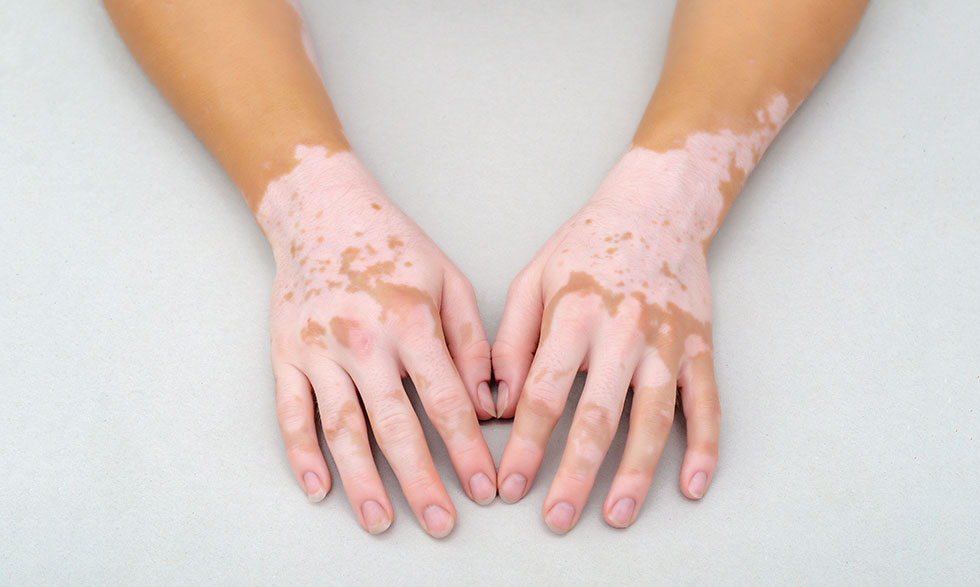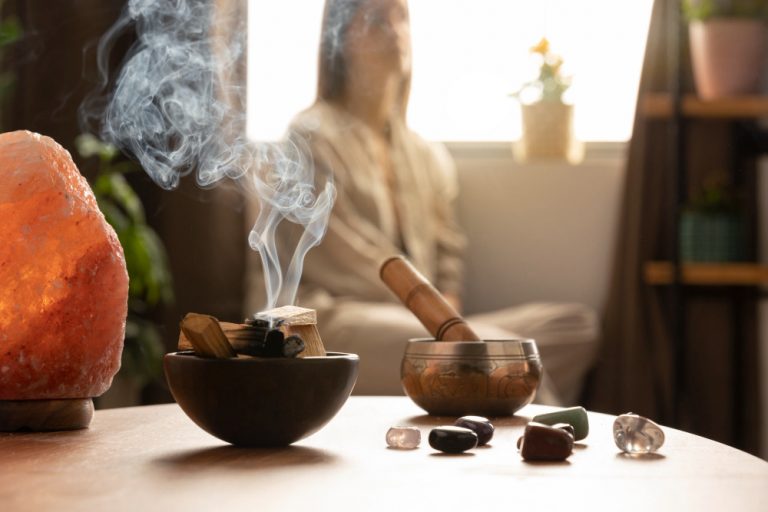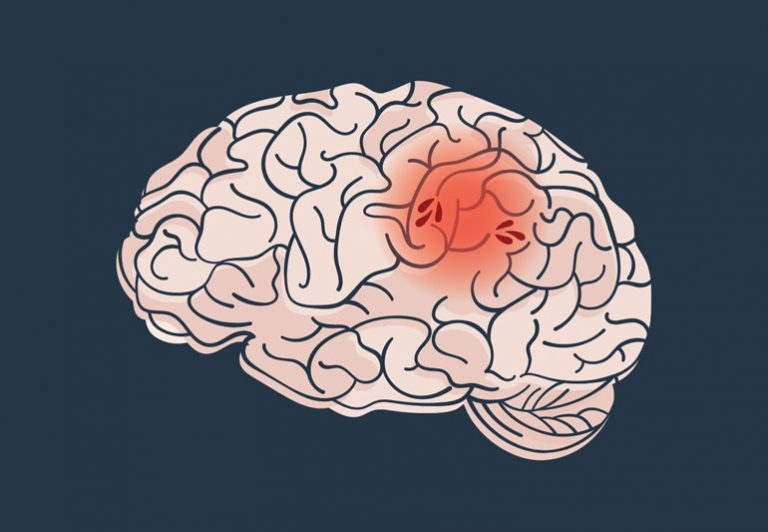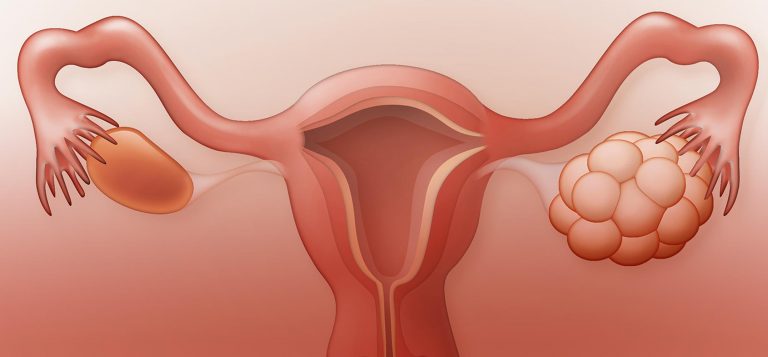Vitiligo, characterized by the appearance of white patches on the skin, is more than just a dermatological issue—it often carries an emotional and psychological burden for those affected. This condition, agnostic of race or gender, arises when the skin’s pigment-producing cells, melanocytes, cease to function or perish. However, solutions can be found in the depths of ancient wisdom. Specifically, Ayurveda, a 5000-year-old Indian medical philosophy, offers hope for those battling vitiligo. With its profound insights on maintaining skin health and restoring pigmentation, Ayurveda provides a holistic approach, framing vitiligo not as an incurable condition, but as an imbalance that can be rectified.
Understanding Vitiligo
Vitiligo is a skin condition characterized by patches of the skin losing their pigment. It’s a disorder that affects both men and women, irrespective of their age or ethnicity. Although its exact cause remains unknown, it’s often linked to autoimmune issues where the body’s immune system attacks and destroys melanocytes in the skin. Melanocytes are the cells responsible for producing melanin, the pigment that gives skin its colour.
Typically, the initial symptoms are small white patches on the skin that gradually enlarge. These patches can occur anywhere but are most common on sun-exposed areas like the face, hands, and feet. Vitiligo is neither contagious nor life-threatening, but it can lead to significant psychological distress due to its conspicuous nature.
Ayurveda: An Ancient Approach to Health
Tracing its roots back over 5,000 years, Ayurveda is an ancient holistic healing system hailing from the Indian subcontinent. The term ‘Ayurveda’ is derived from the Sanskrit words ‘Ayur’ meaning life and ‘Veda’ meaning knowledge, translating to ‘the knowledge of life’. This traditional system of medicine espouses a holistic understanding of health and wellness, stressing the harmony between the body, mind, and spirit.
Ayurveda’s fundamental principles revolve around three vital energies or ‘doshas’ – Vata, Pitta, and Kapha. Each individual has a unique balance of these doshas, and health issues, including skin disorders, are believed to arise when there is a disruption in this balance. Ayurveda’s ultimate goal is to restore this balance through natural and holistic methods, involving diet, exercise, meditation, herbal remedies, and lifestyle adjustments.
Ayurveda and Vitiligo
In Ayurvedic philosophy, vitiligo, or ‘Shwitra’ or ‘Kilasa’, is seen as a manifestation of an underlying imbalance in the body’s vital energies or ‘doshas’. Specifically, it’s believed that vitiligo is often a consequence of a disturbance in the Pitta dosha, the energy that controls digestion and metabolism. An inappropriate diet, impaired digestion, and accumulated toxins can aggravate Pitta, resulting in skin disorders like vitiligo.
Ayurveda’s holistic approach emphasizes not just the physical aspects of the condition, but also the mental and spiritual elements. Therefore, alongside external applications, lifestyle modifications and stress management techniques play a crucial role in managing vitiligo in Ayurveda, aiming to restore overall balance and harmony in the body.
Ayurveda’s approach to treating vitiligo is comprehensive. It aims not merely at re-pigmentation of the skin but targets the root cause, facilitating long-term health and balance.
Ayurvedic Treatments and Remedies for Vitiligo
Ayurvedic treatments for vitiligo often involve a combination of internal and external therapies aimed at detoxification, immune system regulation, and promotion of skin health. The objective is not just to manage the visible symptoms but to address the root cause of the condition, offering a holistic pathway to health and well-being. Some of the common approaches to Vitiligo treatment in Ayurvedic philosophy include:
Bakuchi (Psoralea Corylifolia):
This medicinal plant has a special place in Ayurvedic literature for treating vitiligo. It helps stimulate the melanocytes to produce more melanin. Topical applications or oral consumption of Bakuchi can help promote re-pigmentation.
Khadira (Acacia catechu):
Khadira is a renowned Ayurvedic herb beneficial for skin disorders. A concoction made from its bark is believed to purify the blood and restore skin health.
Panchakarma:
This detoxifying process aids in the elimination of toxins, thereby rectifying the underlying dosha imbalances. It’s customized as per individual requirements to promote overall health and well-being. The five procedures in Panchakarma include Vamana (therapeutic vomiting), Virechana (purgation), Basti (enema), Nasya (nasal administration), and Raktamokshana (bloodletting).
Yoga and Meditation:
Regular practice of yoga and meditation helps reduce stress, which is seen as a potential trigger for vitiligo. Specific yogic postures and breathing exercises are recommended to ensure balance and harmony within the body.
Herbal Pastes:
Ayurveda often uses topical applications like herbal pastes for vitiligo treatment. For instance, a paste made of red clay mixed with ginger juice is believed to stimulate blood flow and aid skin restoration.
These treatments are representative of Ayurveda’s holistic approach towards vitiligo, which not only aims at treating the physical symptoms but also targets the root causes. It’s worth noting that while these remedies offer potential benefits, professional consultation is vital for personalized advice, considering vitiligo’s complexity and individual variations.
Ayurvedic Diet and Lifestyle for Vitiligo
Maintaining a healthy lifestyle and diet forms the backbone of Ayurvedic philosophy. For vitiligo, Ayurveda suggests a diet that pacifies the Pitta dosha. Foods that are cooling, bitter, and astringent, like cucumber, bitter gourd, and black grapes, are encouraged. Spicy, oily, and fermented foods that can aggravate the Pitta are to be avoided. Adequate hydration is stressed to flush out toxins from the body.
In terms of lifestyle, stress management is integral. Regular practice of Yoga and meditation aids in achieving mental tranquillity, indirectly benefiting skin health. Adequate sleep and physical activity also contribute to overall health and well-being, complementing the holistic approach towards managing vitiligo.
Takeaway
To recap, vitiligo, although challenging, can be managed with a blend of traditional and holistic approaches. Ayurveda, with its roots in ancient wisdom, offers natural and wholesome ways to address vitiligo’s underlying causes. From understanding the significance of dosha imbalances to employing specific Ayurvedic remedies, it provides a comprehensive treatment plan. Incorporating suggested dietary habits and stress management techniques further boosts overall well-being. However, it is crucial to seek guidance from an Ayurvedic practitioner for your health issues. So, if you are looking to undergo Ayurveda treatment in Kerala for vitiligo, you can avail the expertise of the practitioners at Ishani Ayurveda.





